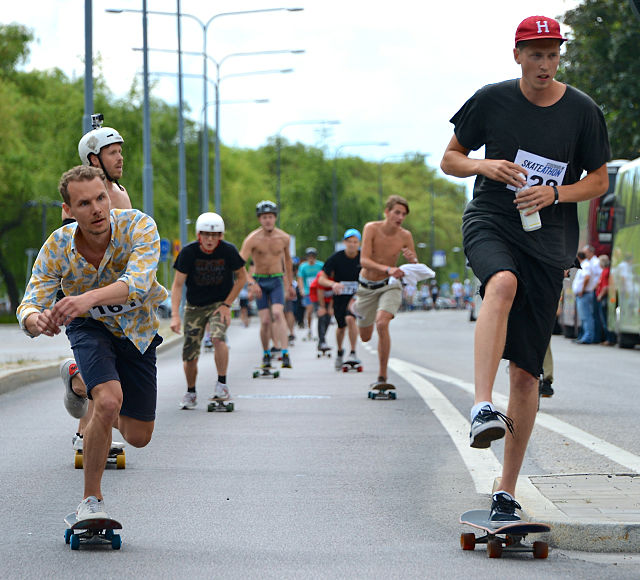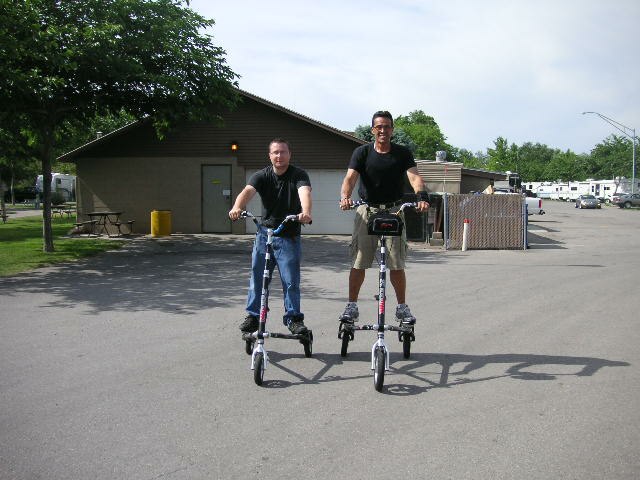Kinetic sculpture races are organized contests of human-powered amphibious all-terrain works of art. The original cross country event, the World Championship Great Arcata To Ferndale Cross Country Kinetic Sculpture Race, now known as the Kinetic Grand Championship in Humboldt County, California, is also called the "Triathlon of the Art World" because art and engineering are combined with physical endurance during a three-day cross country race that includes sand, mud, pavement, a bay crossing, a river crossing and major hills.
Team Melvin crosses Humboldt Bay during the 2010 Kinetic Grand Championship
Duane Flatmo's Extreme Makeover crosses Humboldt Bay during the 2005 Grand Championship
Wet Paint enters Old Town Eureka
The 2011 Grand Mediocre East Coast Champion was Platypus. Built by David Hess, the two-ton sculpture is powered on land and water by 8 pilots, with an additional driver steering it along the 15-mile racecourse. Here, it races through Baltimore's Fell's Point neighborhood.
Human-powered transport is the transport of person(s) and/or goods (freight) using human muscle power. Unlike animal-powered transport, human-powered transport has existed since time immemorial in the form of walking, running and swimming, as well as small vehicles such as litters, rickshaws, wheelchairs and wheelbarrows. Modern technology has allowed mechanical advantage devices and machines to enhance human-power.
Sherpa carrying wood to Mount Everest base camp
Shopping trolley
Skateboards are propelled by pushing (one foot riding on board, one foot pushing on ground) or by gravity
Trikkes are powered by shifting the rider's body weight








